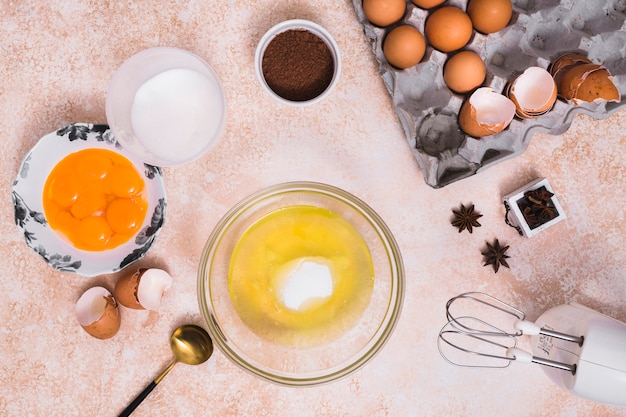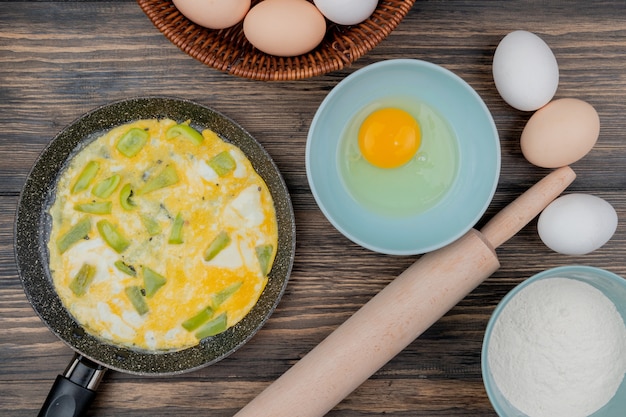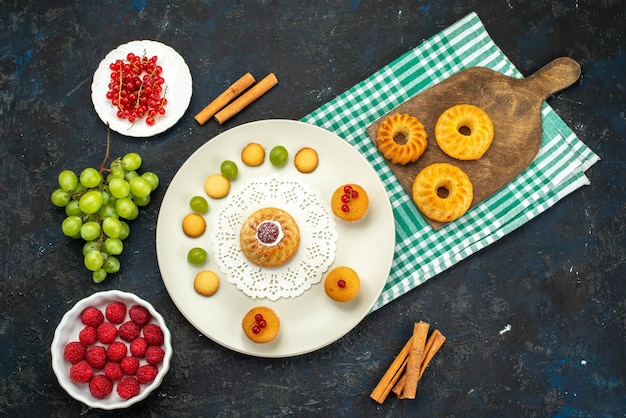Ah, boiled eggs. A seemingly simple culinary feat, but one that can leave even the most seasoned cook scratching their head in frustration. From rubbery yolks to runny whites, the quest for the perfect boiled egg can feel like an endless cycle of trial and error. But fear not, my friends! I've been there, and I'm here to share my hard-earned wisdom, along with some trusty tips and tricks that will transform you from egg-boiling novice to master.
This guide isn't just about recipes or timings; it's about understanding the science behind the perfect boil. We'll delve into the intricacies of egg freshness, size, and temperature, and explore various methods for achieving that elusive runny yolk and perfectly set white. You'll learn how to peel your eggs like a pro, and discover the diverse culinary possibilities that lie beyond the simple boiled egg.
So grab a kettle, gather your eggs, and let's embark on this egg-cellent journey together!
(Part 1) The Basics: Understanding Your Eggs

1. Freshness: The Key to a Perfect Boil
Forget what you've heard about older eggs being better for hard-boiling. When it comes to achieving that perfectly soft-boiled dream, freshness is king! You see, older eggs have a larger air pocket, which increases the risk of cracking during cooking and makes the yolk harder to control. Plus, their whites become tougher, making it harder to achieve that delicate, runny consistency.
2. Size Matters: Bigger Eggs, Longer Times
Think about it: a large egg has more volume to cook through, so it needs more time to reach the desired doneness. You can't just apply the same timings for every egg size. Keep that in mind when you're planning your egg-boiling adventure.
3. Temperature: The Gentle Touch
Don't be tempted to jump straight to boiling water! While a rolling boil might seem like the fastest way to cook an egg, it can actually lead to overcooking and those dreaded green rings around the yolk. Those rings happen when the iron in the yolk reacts with the hydrogen sulfide in the egg white during prolonged exposure to high heat.
4. Gentle Cooking: Unlocking the Secret to Tender Yolks
The key to a perfect soft boil lies in gentle cooking. Think of it as a slow and steady approach to achieving that perfect texture. The ideal temperature is around 185°F (85°C), allowing the yolk to cook slowly and evenly while keeping the white tender.
(Part 2) Time for the Boiling: Your Options

1. The Traditional Method: A Timeless Classic
This is the method we all grew up with. It's simple, reliable, and perfect for a basic soft boil.
Prep your eggs: Place them in a saucepan, ensuring they're covered with cold water.
Add a pinch of salt: This helps prevent cracking, especially if you're using older eggs.
Simmer, don't boil: Bring the water to a gentle simmer over medium heat.
Cook with care: Once simmering, cover the pan and cook for the desired time.
2. The Shock Method: A Plunge for Perfect soft boiled eggs
This method is a favourite for achieving a perfect soft boil with a runny yolk and set white. It's all about timing and a quick plunge into ice water.
Cold water start: Place your eggs in a saucepan with cold water.
Bring it to a boil: Let the water come to a rolling boil.
The ice-cold shock: Immediately remove the pan from the heat and plunge the eggs into a bowl of ice water. This stops the cooking process and prevents overcooking.
3. The Baking Method: A Gentle Approach for Tender Yolks
This is a great method for those who prefer a gentler cooking approach, especially for soft-boiled eggs with a perfectly cooked yolk.
Preheat your oven: Set it to 325°F (160°C).
Prepare your eggs: Place them in a baking dish, ensuring they're covered with cold water.
Bake it slow and steady: Bake for 20-25 minutes for soft-boiled eggs, 30-35 minutes for medium-boiled eggs, and 40-45 minutes for hard-boiled eggs.
(Part 3) Timing is Everything: The Art of the Perfect Boil

Here's where the fun really begins. Remember, timing is critical. The ideal cooking time will vary slightly depending on your egg size, but these are some general guidelines to get you started.
1. Soft Boiled: The Runny Yolk Dream
Traditional Method: 3-4 minutes (depending on the egg size)
Shock Method: 3-4 minutes (depending on the egg size)
2. Medium Boiled: The Perfect Balance
Traditional Method: 6-7 minutes
Shock Method: 6-7 minutes
Baking Method: 30-35 minutes
3. Hard Boiled: Solid and Ready
Traditional Method: 8-10 minutes
Shock Method: 8-10 minutes
Baking Method: 40-45 minutes
(Part 4) The Art of Peeling: Unlocking the Smoothest Peel
Peeling a boiled egg can be a frustrating experience, but it doesn't have to be! These tricks will make the process smoother and easier, even for those of us who have a history of egg-peeling disasters.
1. The Cold Water Trick: A Cool Peel
The key to a smooth peel lies in cooling your eggs quickly after cooking. Immediately plunge them into a bowl of ice water. This helps to contract the white, making it easier to separate from the shell.
2. The Tap Method: A Gentle Crack for a Smooth Release
Once your eggs are cool, gently tap the bottom of each egg on a hard surface, creating a small crack. This helps to release air trapped inside, making peeling easier.
3. The Rolling Method: A Smooth Roll for a Smooth Peel
Gently roll the egg between your palms, applying light pressure. This helps to loosen the shell from the white, making peeling smoother and preventing those frustrating bits of shell from sticking to the egg.
(Part 5) The Perfect Egg for Every Occasion
Boiled eggs are incredibly versatile. They're not just for breakfast! Here are some ideas for using boiled eggs in your culinary creations.
1. The Soft Boiled Egg: A Breakfast Classic
Soft-boiled eggs are a breakfast staple, adding richness and creaminess to toast soldiers, a simple breakfast sandwich, or even a bowl of porridge.
2. The medium boiled egg: The Versatile Option
Medium-boiled eggs are perfect for salads, sandwiches, or as a quick and satisfying snack. The yolk is still creamy, but the white is firm enough to slice neatly.
3. The hard boiled egg: A Culinary Workhorse
Hard-boiled eggs are a pantry staple. They're a versatile ingredient for salads, deviled eggs, sandwiches, and even as a standalone snack.
(Part 6) Mastering the Perfect Soft Boil: A Personal Journey
My egg-boiling journey wasn't always smooth sailing. I remember my first attempt at a soft-boiled egg using the shock method. I was so excited to try this new technique, but I ended up overcooking them. The yolks were rock-hard, the whites were rubbery, and I felt a wave of defeat.
But I persisted. Through trial and error, I learned the importance of careful timing and the benefits of a quick ice-water plunge. It's all about finding that sweet spot where the yolk remains perfectly runny while the white sets just enough to hold its shape.
After trying all the different methods, I've found that the shock method consistently delivers that perfect soft-boiled egg. The instant plunge into ice water ensures the yolk doesn't overcook, resulting in that creamy, dreamy consistency.
(Part 7) More Than Just Breakfast: Eggs Beyond the Ordinary
Let's face it: boiled eggs can be so much more than just a simple breakfast staple. They're the foundation for a variety of delicious and satisfying dishes.
1. Eggs Benedict: A Brunch Classic
Eggs Benedict is a luxurious brunch treat that features poached eggs, hollandaise sauce, and crispy Canadian bacon. It's a classic for a reason!
2. Deviled Eggs: A Party Favourite
Deviled eggs are a perennial party favourite. They're easy to prepare and always a crowd-pleaser.
3. Eggs in Purgatory: A Spicy Italian Delight
Eggs in purgatory is a simple but satisfying Italian dish with eggs simmered in a spicy tomato sauce. It's perfect for a quick and flavorful dinner.
(Part 8) Beyond Boiling: Exploring Other egg cookery Techniques
While boiling is a great way to cook eggs, it's not the only method. Let's explore some other ways to enjoy eggs in all their glory.
1. Frying: The Classics and Beyond
Fried eggs are a breakfast classic, but they also add a delightful touch to many other dishes. From sunny-side up to over easy to scrambled, the possibilities are endless.
2. Poaching: A Delicate and Delicious Method
poaching eggs is a delicate technique that creates a soft, pillowy egg. It's perfect for Eggs Benedict, as a topping for salads or soups, or simply served alongside a side of toast.
3. Baking: A Gentle Approach for Tender Eggs
Baking eggs is a gentler method that produces a tender egg with a creamy yolk. It's a great option for a simple breakfast dish or as a topping for baked potatoes.
(Part 9) Eggs and Allergies: A Consideration
1. Egg Allergies: A Common Concern
Egg allergies are a common concern, particularly among young children. If you or someone you know has an egg allergy, it's crucial to be aware of the symptoms and avoid foods that contain eggs.
2. Egg Substitutes: A Solution for Allergy Sufferers
Thankfully, there are many egg substitutes available on the market that can be used in baking and cooking. These substitutes are usually made from flaxseed meal, applesauce, or bananas, providing a great alternative for those with egg allergies.
(Part 10) FAQs: Your Egg-Related Questions Answered
You've got questions, I've got answers! Let's tackle some common egg-related inquiries.
1. How do I tell if an egg is fresh?
There's a simple test to determine an egg's freshness. Place it in a bowl of cold water. A fresh egg will sink to the bottom and lie flat. An older egg, with its larger air pocket, will float to the surface.
2. How long can I keep eggs in the fridge?
Eggs can be kept in the fridge for up to 3 weeks, but it's best to use them sooner rather than later for the best flavour and texture.
3. What happens if I overcook an egg?
Overcooked eggs are a common culinary mishap. Overcooking will make the yolk hard and rubbery, and the white tough and rubbery.
4. Why do boiled eggs sometimes have a green ring around the yolk?
The green ring around the yolk is a sign of overcooking. It occurs when the iron in the yolk reacts with the hydrogen sulfide in the egg white during prolonged exposure to high heat.
5. Is it safe to eat a cracked egg?
It's generally not safe to eat a cracked egg. The crack can allow bacteria to enter the egg, which could make you sick. It's best to discard cracked eggs and use fresh ones.
There you have it, folks! I hope this comprehensive guide has armed you with the knowledge and confidence to boil the perfect egg every time. Remember, practice makes perfect. Don't be afraid to experiment, adjust your methods, and discover what works best for you. And most importantly, enjoy your perfectly boiled eggs!
Everyone is watching

How to Cook Frozen Lobster Tails Perfectly: A Step-by-Step Guide
RecipesLobster. Just the word conjures up images of lavish meals, special occasions, and a taste of luxury. But let's...

Pigs in a Blanket Cooking Time: How Long to Bake for Perfect Results
RecipesAh, pigs in a blanket. Just the name conjures up images of those delightful little parcels of crispy pastry en...

Pork Fillet Cooking Time: How Long to Cook It Perfectly
RecipesPork fillet, or tenderloin as it's sometimes called, is a real favourite in our house. It's so versatile, and...

The Ultimate Guide to Tender, Juicy Pulled Pork
RecipesRight, let's talk pulled pork. It's one of those dishes that just screams "comfort food," doesn't it? I mean...

The Ultimate Guide to Cooking Sweet Potatoes: From Roasting to Mashing
RecipesSweet potatoes. Just the name conjures up images of warm, comforting dishes, bursts of vibrant color, and a to...
